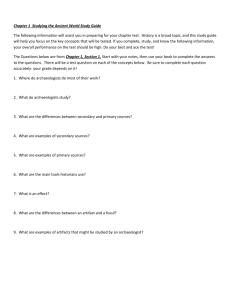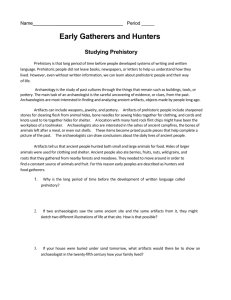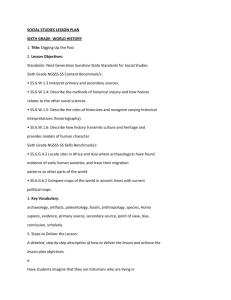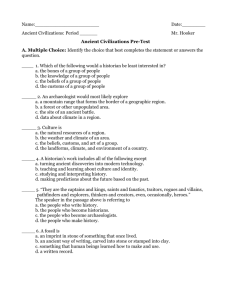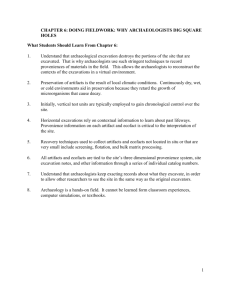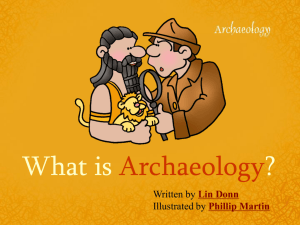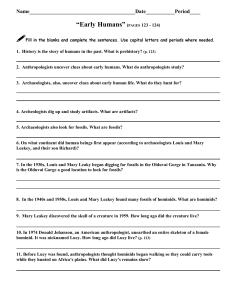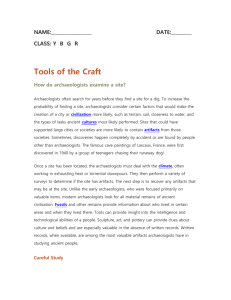Early Humans Reading
advertisement
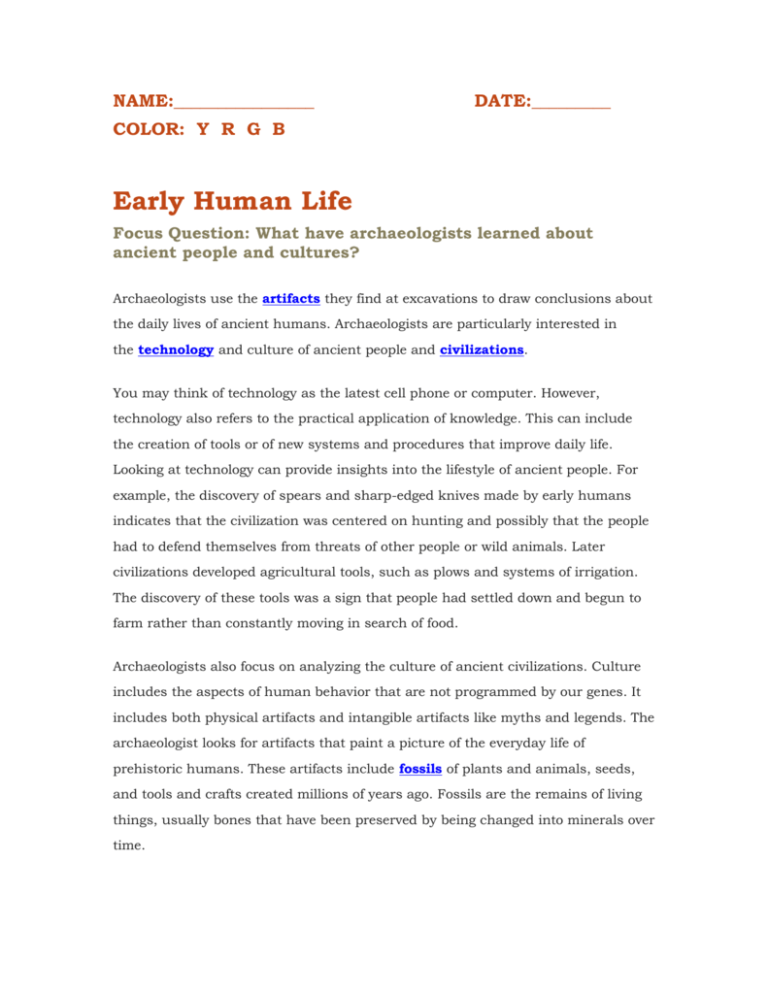
NAME:________________ DATE:_________ COLOR: Y R G B Early Human Life Focus Question: What have archaeologists learned about ancient people and cultures? Archaeologists use the artifacts they find at excavations to draw conclusions about the daily lives of ancient humans. Archaeologists are particularly interested in the technology and culture of ancient people and civilizations. You may think of technology as the latest cell phone or computer. However, technology also refers to the practical application of knowledge. This can include the creation of tools or of new systems and procedures that improve daily life. Looking at technology can provide insights into the lifestyle of ancient people. For example, the discovery of spears and sharp-edged knives made by early humans indicates that the civilization was centered on hunting and possibly that the people had to defend themselves from threats of other people or wild animals. Later civilizations developed agricultural tools, such as plows and systems of irrigation. The discovery of these tools was a sign that people had settled down and begun to farm rather than constantly moving in search of food. Archaeologists also focus on analyzing the culture of ancient civilizations. Culture includes the aspects of human behavior that are not programmed by our genes. It includes both physical artifacts and intangible artifacts like myths and legends. The archaeologist looks for artifacts that paint a picture of the everyday life of prehistoric humans. These artifacts include fossils of plants and animals, seeds, and tools and crafts created millions of years ago. Fossils are the remains of living things, usually bones that have been preserved by being changed into minerals over time. Archaeologists also look for cultural relics that can provide insights into the beliefs and customs of a people. Oral or written traditions are the easiest way for historians to learn about these aspects of culture, but other artifacts can also be used. Sculptures of gods or artwork painted on crafts or buildings often depict religious beliefs. Burial sites can provide an understanding of a culture’s beliefs about death. Items left in tombs can let historians know what the people considered important or valuable, as well as provide clues about the status and identify of the tomb’s inhabitant. For example, the ancient relatives of humans, known as Neanderthals, used to be poorly understood. Recent archaeological discoveries of hearths, personal adornments, and simple graves suggest that Neanderthals had more sophisticated technological and social abilities than previously thought.

